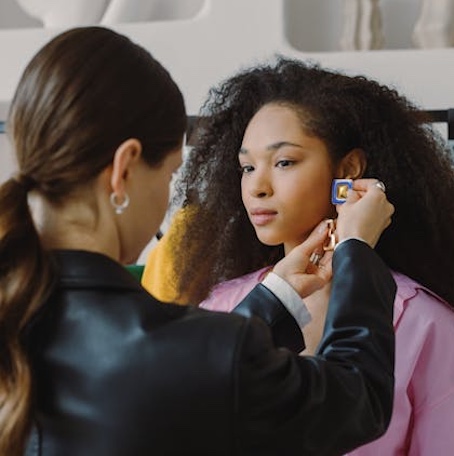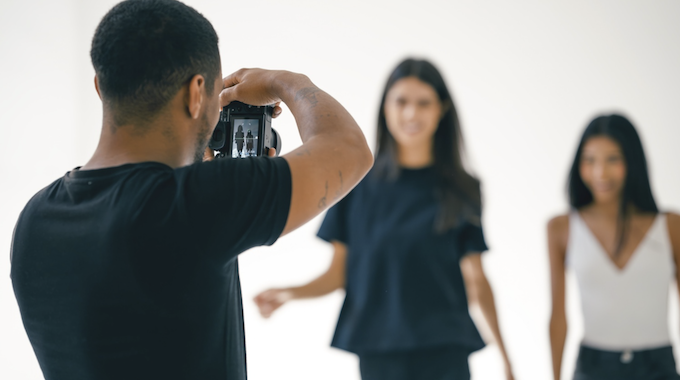Exploring Careers in the Fashion Industry: Roles Behind the Scenes

13-10-2025
The fashion industry relies on a wide network of specialists who contribute to the creation, production, and presentation of clothing and accessories. Beyond designers and models, there are many professionals who handle planning, logistics, education, and technical development. These behind-the-scenes roles form the structure that sustains design houses, retailers, and educational institutions.

Creative and Technical Coordination
Fashion design teams depend on creative and technical specialists who translate artistic ideas into finished garments. Pattern cutters, fabric technologists, and product developers play key parts in this process. Pattern cutters interpret design sketches, construct templates, and calculate material needs. Fabric technologists assess textile durability, colourfastness, and production suitability. Product developers supervise prototypes, identify fitting issues, and refine items before mass production.
These positions require knowledge of materials, computer-aided design software, and garment construction methods. Many professionals come from fashion technology or garment engineering programmes rather than design schools. Their work helps maintain consistency between concept and manufacture, allowing collections to progress from sketches to ready-to-wear lines.
Beauty and Presentation Support
Fashion depends heavily on presentation. Makeup artists, hair stylists, and beauty specialists enhance runway shows, photo shoots, and retail campaigns. People trained through a beauty academy or short beauty courses contribute to these events through skills in nail art, eyelash extensions, and brow mapping. They might also apply tinting techniques, brow lifting, or perfect an eyebrow shape to meet the aesthetic requirements of each collection.
Many professionals enter this field after completing an online beauty training programme or a vocational beauty training certificate. Courses often include modules on facial courses, waxing courses, and the patch test procedures used before chemical applications. Some artists expand into makeup artist work within editorial and film production, while others stay within fashion show settings.
Technical precision defines this branch of the industry. Practitioners must maintain hygiene standards, understand product composition, and adapt their professional equipment for changing conditions such as lighting or fabric texture. Strong client communication and customer service skills are equally necessary, especially when collaborating with stylists or creative directors.
Business Operations and Education
Fashion enterprises require administrative and educational support that promotes structure and financial sustainability. Managers, merchandisers, and marketing professionals often have backgrounds in business schools or fashion management courses. Their expertise covers budgeting, supplier coordination, and trend forecasting. In design houses, they liaise between production teams and retailers to maintain consistent output and delivery schedules.
Education and training also shape the future workforce. Institutions offering online courses and training course options prepare individuals for careers in fashion, textiles, and aesthetics. Many educators hold a professional diploma and experience as a class instructor. Training providers prioritise practical sessions in a training environment that replicates real workplaces and supports employment prospects. Programmes might cover presentation methods for product displays, hair training, or the use of professional beauty tools in commercial contexts.
Production and Material Management
Behind design studios, production departments coordinate everything from sourcing to distribution. Pattern grading specialists modify designs for multiple sizes. Sample machinists produce test garments to assess cut and drape. Quality controllers inspect each batch to guarantee uniform construction standards.
In textile mills, technicians research new products that offer improved performance or sustainability. Laboratory testing covers fibre strength, shrinkage, and colourfastness. Workers in these roles often gain qualifications through training courses in textiles or manufacturing. Their decisions influence efficiency, cost control, and environmental impact.
Professionals engaged in nail enhancements or surface decoration contribute to related branches of fashion manufacturing. Their precision techniques parallel those found in garment finishing, where surface detail determines final product value.

Retail, Media, and Public Engagement
Fashion communication specialists link production with the public. Editors, buyers, stylists, and visual merchandisers translate creative intent into marketable content. They evaluate collections, coordinate showrooms, and select pieces for publication or sale. Digital content managers and e-commerce strategists control brand representation across multiple channels.
Public relations officers and event coordinators also influence visibility. Their planning ensures the smooth operation of fashion shows and exhibitions. They handle media coverage, sponsorship, and guest management. Each of these functions supports brand reputation and commercial success through accurate timing and clear messaging.
Many of these professionals receive foundational knowledge from vocational beauty training or professional diploma courses before shifting into managerial or creative communication positions. Their early exposure to product care, presentation, and teamwork helps them handle the aesthetic and logistical requirements of modern fashion events.
In Conclusion
The fashion industry functions through coordination among creative, technical, and administrative specialists. Designers may define a collection’s concept, but execution depends on individuals who cut patterns, test materials, style models, and educate future professionals. Beauty technicians, production staff, and business managers together create the structure that supports fashion’s visibility and economic reach.
Accurate technical skill, consistent education, and an understanding of consumer behaviour remain central to progress in this sector. From studios to classrooms and from runways to factories, behind-the-scenes professionals sustain the industry’s rhythm through skill, precision, and cooperation.
Top image: Ron Lach via pexels























